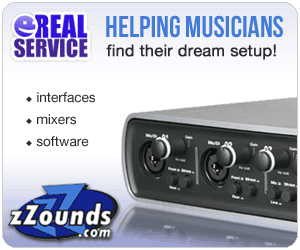
Choosing A Microphone
When recording vocals it usually fills a beginner with a particular an explicit quantity of apprehensiveness. If it is your 1st time, it's a decent plan to assemble as much info attainable. Doing this will create the most effective recording possible as soon as possible. The thing is that with some careful brainstorming you ought to be able to make a completely professional sounding vocal recording the first time in the booth
Fundamental to great vocal recordingsv
A High Quality Condenser or Dynamic Microphone Please ensure you have a microphone that's industry standard. That doesn't necessarily mean it has to be the most expensive mic but you want Low-Noise Presence and Warmth.
I recommend a decent} quality large diaphragm condenser microphone or a top quality dynamic mic like Shure or Audio Technica. A condenser mic is very sensitive, detailed, can handle higher db levels. You will need 48 Phantom Power for these mics. Here Are Few Brands That Are Industry Standard when it comes to sound quality and also budget.
Rode NT1A - Great sound quality and one of my favorite condenser mic, needs Phantom Power
Audio Technica AT2020 - non-USB version, but condenser mic that needs phantom power
AKG 420 - condenser mic, needs Phantom Power
Shure SM57 or SM58 - dynamic Microphone
I would recommend avoiding buying a USB mic, unless it's a Blue Usb Mic. Most Usb Mics limit your recording when it comes down to attaining high sound quality vocals.
Every vocalist, rapper or musician voice and tone will be different. So making sure you match up the right microphone for the vocalist voice or tone. Some mics will sound better on higher pitch or smoother vocalist and not sound as good on a person who has a deeper voice.
Matching a mic is all about capturing and enriching desired vocal characteristics. This could take time to learn but your ears will tell you. Find out who your voice sound like (not sing or rap the same)but tone and what type of mic they use. This will get you an idea of what might work for you. Also you might not have to buy the exact mic as Lil Wayne seeming it would probably be more expensive but you could buy a lower model of that brand.
Cables
Good quality microphone cables will retain the detail and sonic data that comes from the mic. So don't go too cheap on cables. Make sure you are getting cables that have great shielding from electrical interference. This will cut down on hum and hiss noise coming from the cables through the recorded vocals. Shure Mic Cables or good and usually get the job done
Pop Shields and Wind Shields
These don't seem to be mandatory, but they are. Unless you want to do a lot of modification and fixing a great vocal that could now sound unnatural do to not having a pop filter. You will waste more time mixing vocals which could become frustrating and effect your overall mix and master. So get a pop filter.
I have found that nylon mesh works just fine.
Warm-up Your Voice.
Most New Music Artist Take This For Granted.
Five minutes of vocal exercises before you enter vocal booth will help out when hitting those high notes and lows, It will be easier and with less strain on your vocal chords. This can be for any genre, including rap and metal. Go into the booth prepared. Say your verse over and over out loud as if you were recording or performing live.
Vocal Proximity and Positioning
I tend to position the pop filter about 4-5 inches from the front of the mic, and I stand about 2- 4 inches away from the pop filter and slightly to and angle, This help take out noises you don't want like breathing or lip smacking or too much detail. It also blends the vocal in the mix better with less eqing in the mixing phase depending if the mic has a phase switch.
The tone of a vocal can changed dramatically by positioning the mic off-axis from the mouth. You can experiment with putting the mic in different positions: This is a way to find that sweet spot. Make a test recordings to hear the difference in positions
Recording Levels
One of the worst possible recording is a distorted one. Once it's there it's almost impossible to take off, and that could ruin a great take.
In all recording work, gain structure is important. It minimizes the inherent noise floor of the equipment.
When recording vocals, always record at 24bit resolution, and I suggest a peak record level of -8 db at 24bit. There is no need to go higher than this.
These settings should produce the best signal-to-noise ratio with the vast majority of Audio interface and mic preamps. In any case, avoid clipping red lights on microphone preamps or mixing console channels when recording.
Dynamic Range Control During Recording
Some engineers like to add some gentle analogue compression during the recording session. This can be done for artistic or technical reasons. For ex. a nice valve compressor can add characteristic.
For character purposes this is fine, but may not be necessary if you ensure that you have ample headroom in your microphone preamp and audio interface.
If you a vocalist with has large dynamic swings (from whisper to loud), it may be a good idea to apply 2-3 dB of gain reduction on the peaks of the vocals during the recording phase.
Be careful not to over compress vocals when starting out, because once it's recorded with the compression it will be very difficult to adjust the effects of the time constants on the recording. If in doubt, leave more headroom,record at a lower level, and do not over compress when recording.
I use an attack of 10-20 ms, and a release of between 150 and 200 ms for a vocal recording, and keep the gain reduction light, around 2-3 dB maximum.
Microphone Preamplifiers
A vocal recording blog wouldn't be complete without talking about microphone preamplifiers. Some of these are very low-cost, such as those found in a basic mixer console, and some can cost thousands of dollars. They can definitely affect the clarity and tone of the recording.
Some are designed with absolute fidelity and precision in mind, and some are designed with basic circuits, and transformers to add some vintage characteristics to your vocal recording. This is very subjective and you must decide if a preamplifier will add something special to your vocal recordings or not.
vAll of the above is essential, but a microphone preamplifier should be very low noise, and represent the output of the mic in an articulate manner.
As you progress in your skills, you will be better equipped to hear the subtle differences between the myriad preamplifiers on the music technology market.
Conclusion
It is completely possible to record a stunning vocal recording with your first-ever recording if you follow these guidelines. It is not particularly difficult if you have the right equipment and make good preparations before the task commences.





